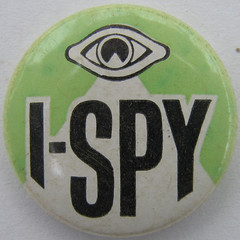Sometimes, using more than one POV in a novel can be tricky. Handling multiple POV styles can be even trickier. Last time, we looked at how to transition effectively between multiple POV characters in third person, and today we’re looking at multiple first person narrators and mixing first and third.

Multiple first-person POV characters
Ooh, now we’re getting tricky! Is that even allowed?
Oh yes. However, you want to be careful in doing this. It’s easy to confuse the reader when both or all of your POV characters call themselves “I.” So here are some quick guidelines on keeping the “I”s dotted straight.

- Only change POVs at chapter breaks. Absolutely never head hop within a single scene. It might be possible to change first person narrators at a scene break, but it still might be jarring. (One of my books has two first person narrators and I always changed narrators ONLY at chapter breaks—and I didn’t use a chapter break unless I was changing viewpoint characters.)
- Don’t be afraid of the “idiot light.” Put the viewpoint character’s name at the top of the chapter! (My band director in middle school used this term to describe a dome light that came on when you opened your door, as if you didn’t realize your door was open. He was using it to describe accidentals in music designed to cancel out the previous measure’s accidentals, which are automatically cancelled by a measure bar—just a reminder in case you’re not smart enough to remember those accidentals are no longer in effect.)
- Make sure your characters have truly distinctive voices. This is important in third person, but critical in first. If they sound too much alike, your POV probably isn’t deep enough—and your readers are going to get confused, no matter what other precautions you take.
Multiple narrators, different persons
Whaaa? Can you even do that?
Yes! You can mix first- and third-person narration. My multiple first-person POVs book I mentioned? It also had some interspersed “scenes” that weren’t “in” chapters—and those were in third person, present tense (vs. past tense for the rest of the book). I needed a more distant POV for the narrator in those sections—and I really couldn’t put his name at the top of his chapters (since it would give away the villain’s identity, a major twist in the novel).
 As with everything else we’ve discussed, if you’re going to mix first person and third person, do it on purpose and with purpose. You can even use different persons for the same character (in different scenes)—just be sure you know what effect you’re going for, and make sure it’s working for that effect. Another example would be Heather Gudenkauf’s The Weight of Silence. It has six or more narrators, all in first person except for the character who is an elective mute. But at the end of the novel, <spoiler alert!> the elective mute breaks her silence and concludes the novel in a first-person epilogue.
As with everything else we’ve discussed, if you’re going to mix first person and third person, do it on purpose and with purpose. You can even use different persons for the same character (in different scenes)—just be sure you know what effect you’re going for, and make sure it’s working for that effect. Another example would be Heather Gudenkauf’s The Weight of Silence. It has six or more narrators, all in first person except for the character who is an elective mute. But at the end of the novel, <spoiler alert!> the elective mute breaks her silence and concludes the novel in a first-person epilogue.
Just in case you’re wondering, as with multiple first person stories, I think it’s helpful to label the chapters with the viewpoint characters’ names, especially if two or more of your POV characters are in first person. (In The Weight of Silence, the chapters were all labeled with the viewpoint character’s name.) You can do this in third person as well, but I find it a lot clumsier than handling multiple third person narrators organically.
What do you think? What’s the most unusual POV or the most unusual POV combination you’ve ever used? How did you handle it? Come join in the conversation!
Photo credits: couple eating—Mr. Thomas; I-Spy badge by Leo Reynolds; Silent—Jennifer Moo


What if you split the scenes and change the pov then? If I can’t do that then my chapters will be really small. =D
Are they both in first person? Honestly, I’ve never read a book in multiple-first person that doesn’t use chapter breaks, so I can’t say how well it works for readers.
Awesome . . . as usual!